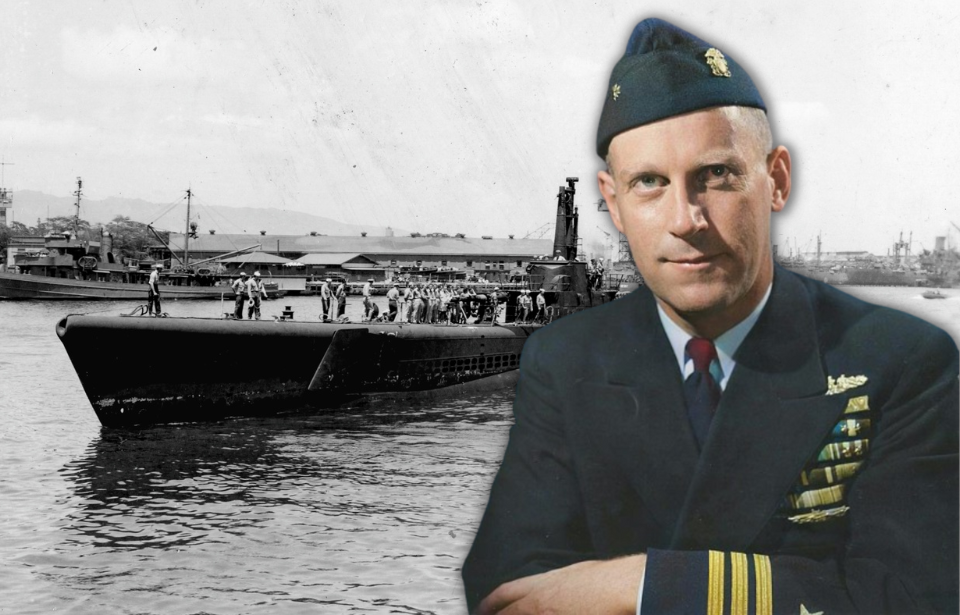Richard O’Kane is the most successful submarine commander in the history of the US Navy. He served during the Second World War, and sank a remarkable number of enemy ships. He applied unique tactics that improved his crew’s efficacy, and his bravery earned him the Medal of Honor, despite the cost being the loss of his vessel and the majority of his sailors.
Richard O’Kane’s early life and entry into the US Navy
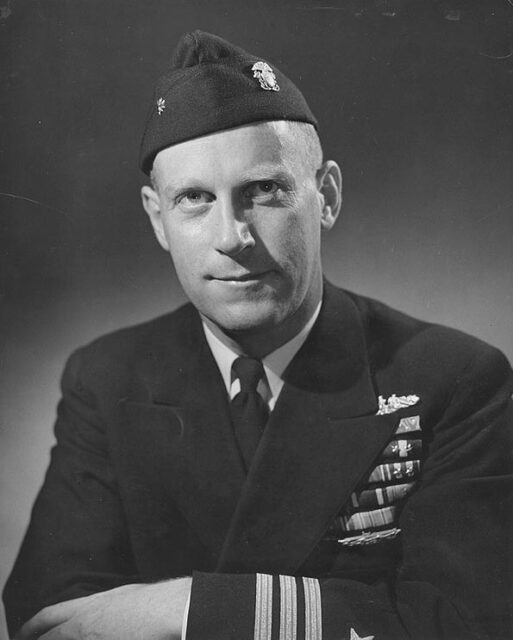
Richard O’Kane was born on February 2, 1911 in Dover, New Hampshire as the youngest of four children. In 1930, he graduated from Phillips Academy, Andover, and went on to study at the US Naval Academy (USNA). He graduated in May 1934 and was commissioned as an officer in the US Navy.
When O’Kane entered active duty, he was stationed above sea level aboard the heavy cruiser USS Chester (CA-27), before being transferred to the USS Pruitt (DD-347). In 1938, he received submarine instruction, serving aboard the USS Argonaut (SM-1) for four years.
Assigned to the USS Wahoo (SS-238) and Tang (SS-306)
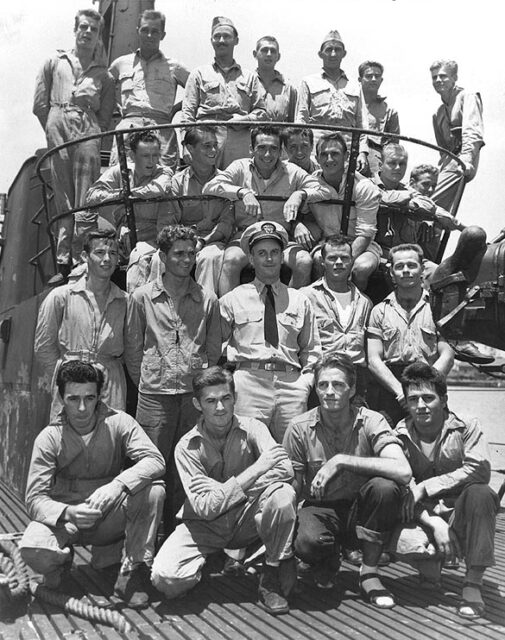
When the United States entered World War II, Richard O’Kane was made part of the pre-commissioning crew of the newly-built USS Wahoo (SS-238), serving as her executive officer. Originally, the submarine was commanded by Lt. Cmdr. Marvin G. Kennedy, and was later put under the leadership of Lt. Cmdr. Dudley Morton. Under Morton, O’Kane learned a plethora of skills that helped him later become the most accomplished submarine commander in history.
After having served on five war patrols aboard Wahoo, O’Kane was promoted to lieutenant commander. He was also made the commanding officer of the USS Tang (SS-306). When she began her first patrol in January 1944, O’Kane implemented several tactics that increased the submarine’s efficacy and success in the war. Some of these included daylight surfacing with increased surveillance and night surface attacks.
Tang earned a Presidential Unit Citation after O’Kane ordered the submarine to participate in “lifeguard duty” in April 1944. This meant stationing the vessel near where the Allies were engaging the enemy in an air attack, to rescue any downed pilots and provide them refuge. Twenty-two were rescued, with Tang traveling more than 3,000 miles to Pearl Harbor to ensure their safe return to US soil.
In the summer of that year, Tang was retrofitted and overhauled, and quickly returned to service under O’Kane’s that September. Soon, he’d have his crew participate in their fifth and final war patrol.
The USS Tang‘s (SS-306) assault on a Japanese convoy
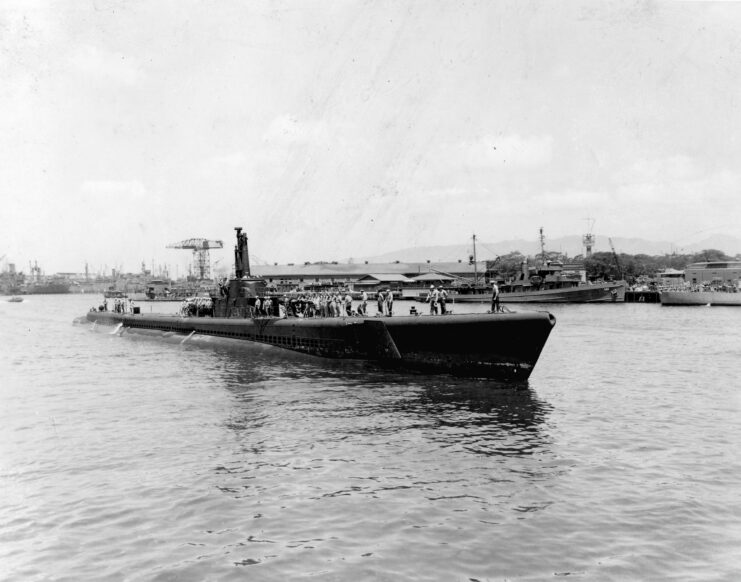
On October 23, 1944, Richard O’Kane commanded the USS Tang and her crew in their final assault. At this time, the submarine was operating in the South China Sea. Heading toward the Leyte Gulf, in the Philippines, was a Japanese convoy. O’Kane ordered a night surface attack to stop their voyage. Several torpedoes were fired by Tang, hitting three of the enemy ships.
During the engagement, O’Kane caught sight of a Japanese transport vessel charging straight at Tang in a ramming attempt. Unable to dive, he ordered his crew to whip the submersible around, preventing the ship from ramming them. Instead, the transport collided with an oncoming enemy tanker. Four torpedoes were fired at the latter, sinking her.
Preparing to leave the depths of the convoy, O’Kane ordered their last torpedoes be fired as they raced toward the open ocean. In doing so, another Japanese ship was sunk, providing Tang ample time to make a hasty escape.
Things don’t go as planned for the USS Tang (SS-306)
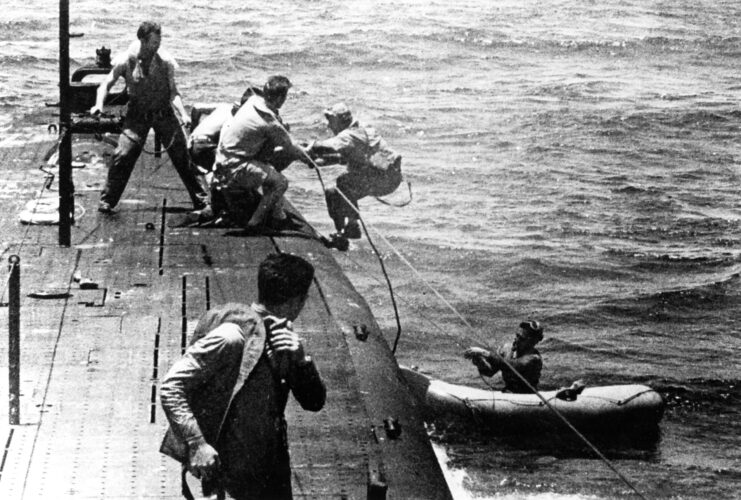
The following morning, Richard O’Kane and the USS Tang were on their way to Turnabout Island. Along the way, another enemy convoy was spotted on their radar. Again, O’Kane ordered that his men to engage. Firing several torpedoes, Tang struck a tanker and two transports. Another destroyer was headed toward the submarine when the Japanese ship blew up, possibly from friendly fire.
The engagement continued into the early hours of October 25, 1944. Having nearly exhausted Tang‘s torpedoes, O’Kane ordered the final two be fired. The first hit its target. The second didn’t. Instead, it surfaced, curved to the left and circled back, hitting Tang‘s torpedo room. Why it backfired remains a mystery. What is known is that the vessel’s crew tried unsuccessfully to avoid it.
The strike caused Tang to sink. Of the over 80 crew members onboard, only nine survived, including O’Kane. They treaded water for hours, before being picked up by a Japanese vessel, which had rescued the survivors of the ships Tang had sunk. When they arrived back on land, the crewmen were sent to the Ōfuna Camp, after which they were transferred to the Ōmori prisoner of war (POW) camp.
The survivors were only released 10 months after the war had concluded.
Richard O’Kane’s post-World War II military career
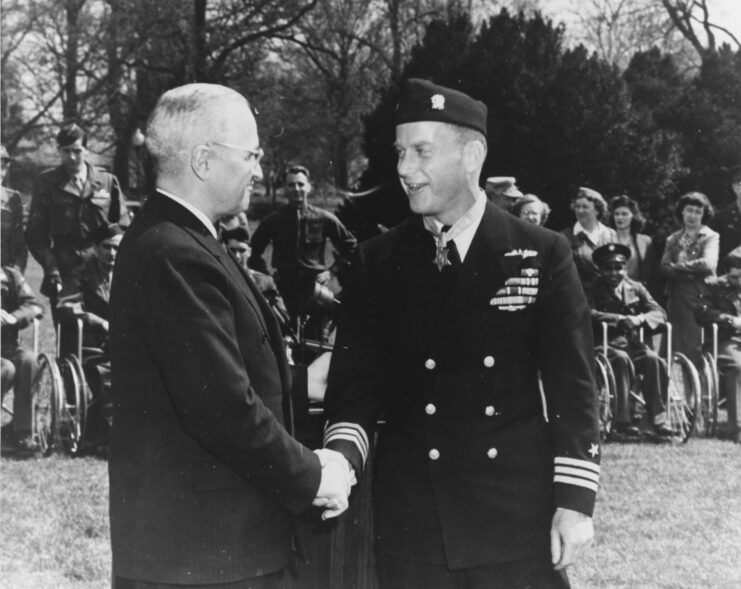
Richard O’Kane earned an incredible reputation following the Second World War. He was recognized for sinking 24 Japanese ships while commanding the USS Tang, a number that was later amended to 33 after Japanese war records were consulted. That totaled over 116,454 long tons sunk – the highest of any single commanding officer. Tang also sank the largest number of enemy ships and tonnage in WWII.
For his “conspicuous gallantry and intrepidity” during Tang‘s final mission, O’Kane was awarded the Medal of Honor, which he received from President Harry S. Truman on March 27, 1946. Throughout his military career, he also earned three Navy Crosses and three Silver Stars, among a number of other decorations.
O’Kane continued to serve with the Navy following the war, stationed aboard various vessels. He became commanding officer of the Submarine School in New London, Connecticut between 1951-1952, and was promoted to captain the following year. He, then, served aboard the USS Sperry (AS-12), before attending the US Naval War College.
More from us: The Little-Known Lost Battalions of World War II
In 1957, Richard O’Kane retired from active duty, at which time he was promoted to the rank of rear admiral. He lived out his final days in Petaluma, California, dying on February 16, 1994, at the age of 83. In 1998, the Navy honored his legacy by naming the Arleigh Burke-class destroyer USS O’Kane (DDG-76) after him.
